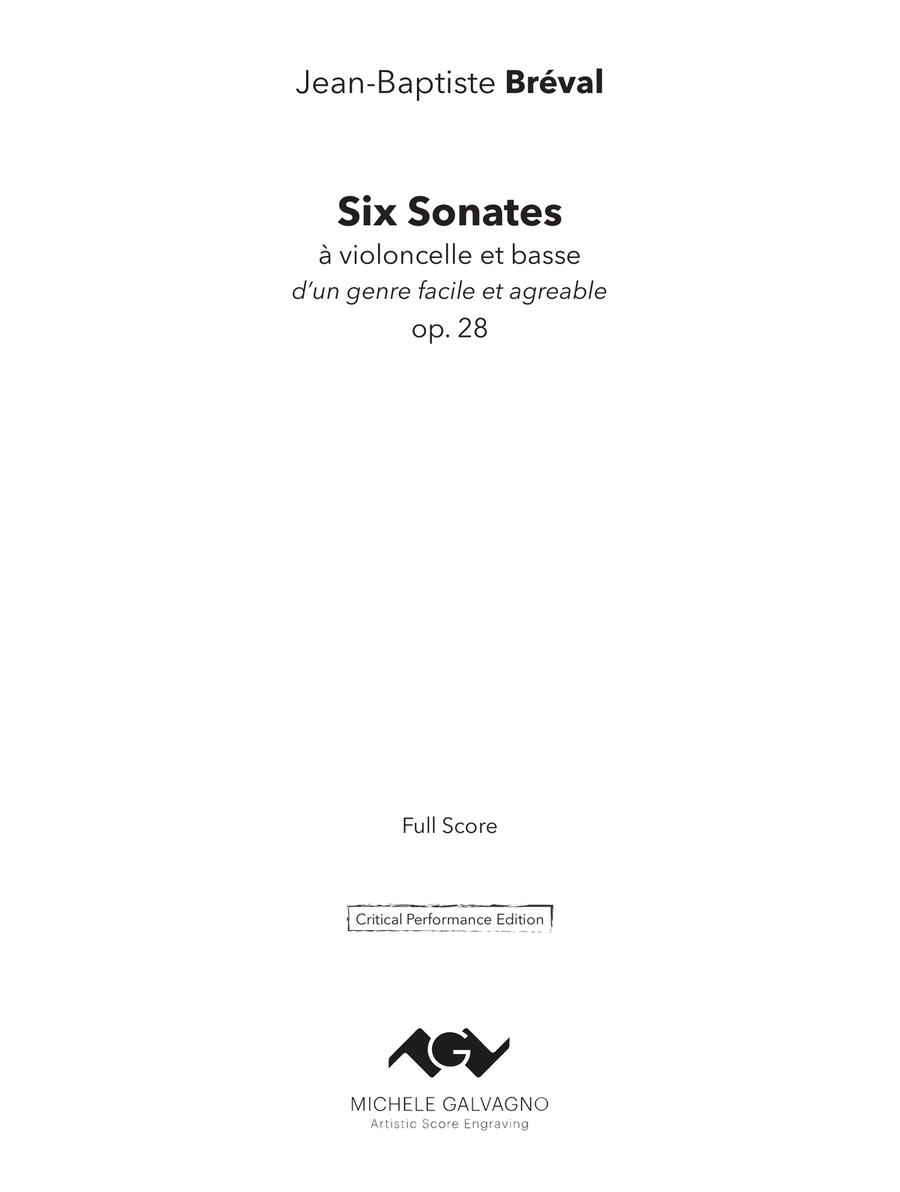Instrumental Duet Cello,Double Bass,Instrumental Duet - Level 1 - Digital Download SKU: A0.841356 Composed by Jean-Baptiste Breval. Arranged by Yuriy Leonovich, Michele Galvagno. Classical,Instructional,Standards. Score and parts. 106 pages. Artistic Score Engraving di Galvagno Michele #6029285. Published by Artistic Score Engraving di Galvagno Michele (A0.841356). Jean-Baptiste Sebastien Bréval (1753-1823) was a French cellist and composer, who is, perhaps, best known for his cello sonatas, namely the ones in C major (Op. 40, No. 1) and G major (Op. 12, No. 5). Bréval was one of the last students of the cellist and composer Martin Berteau (1691-1771), continuing his teacher’s tradition of composing sonatas for cello with bass accompaniment. With both composers, the bass part was to be played by a second cello, very likely by the cello teacher. Many cellists opt in to have Berteau’s unfigured bass part realised by a harpsichord. However, the two-cello layout was common in the late Classical Era, especially in method books, such as Bréval’s own Traité du violoncelle (where Bréval states that the bass and the cello are one and the same), as well as Romberg’s, Dotzauer’s, et al. Romberg and Dotzauer even composed sonatas for cello and basso (second cello) accompaniment as well, Op. 43 and Op. 103, respectively. Our current publication presents student cellists with a beautifully engraved edition of Bréval’s 6 Cello Sonatas, Op. 28 and Air de Malborough, Op. 13. Bréval composed the Sonatas in c1795, most likely in conjunction with Op. 40, since Op. 28, No. 1 picks up right where Op. 40, No. 6 leaves off. Whereas Op. 40 and Op. 28, Nos. 1-4 are in two fast movements, Op. 28, Nos. 5 and 6 include a slow middle movement, No. 6 even using the thumb. The autograph, which the editor used as the primary source, and the first edition both present each sonata on four pages in score form. Our volume includes a score and parts for each player. The cello part includes fingering and bowing suggestions by Yuriy Leonovich. Each sonata begins with an Allegro movement in sonata form. The finales vary from five-part rondos (Nos. 1, 3, 5), to sonata form (Nos. 2, 6), to theme and variations (No. 4). The slow movement of No. 5 is in simple binary form, and No. 6 is in simple ternary. The six keys Bréval used for Op. 28 are the same as the ones he used for Op. 40, only in a different order. Op. 40 uses the following order: C, F, G, B-flat, A, D. Op. 28 uses the following order: D, C, A, G, B-flat, F. The Op. 28 sonatas are primarily written in tenor clef, whereas Op. 40 is primarily written in bass clef. The playing range is identical for both sets, with the exception of the high B-flat in m. 46 in the slow movement of No. 6, and high B and C in m. 37 of the finale of No. 6. Bréval explores more advanced bow techniques as well.
